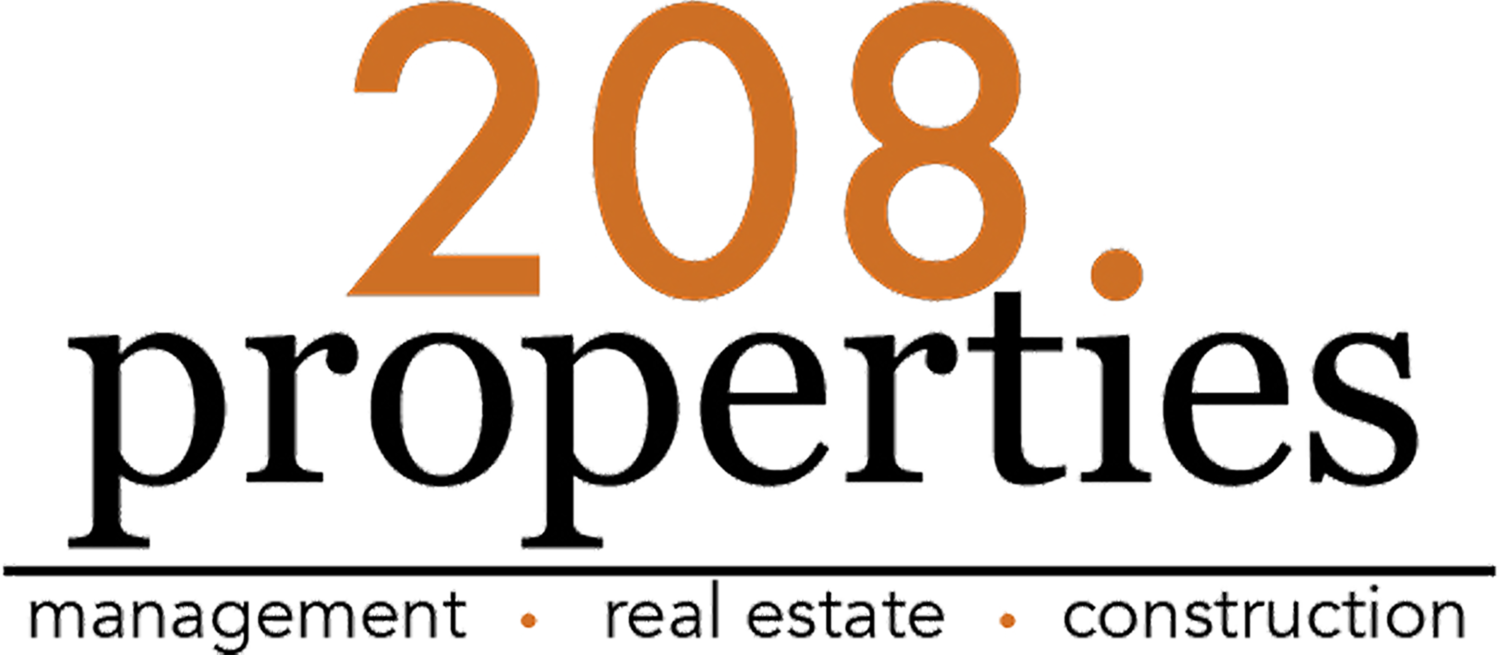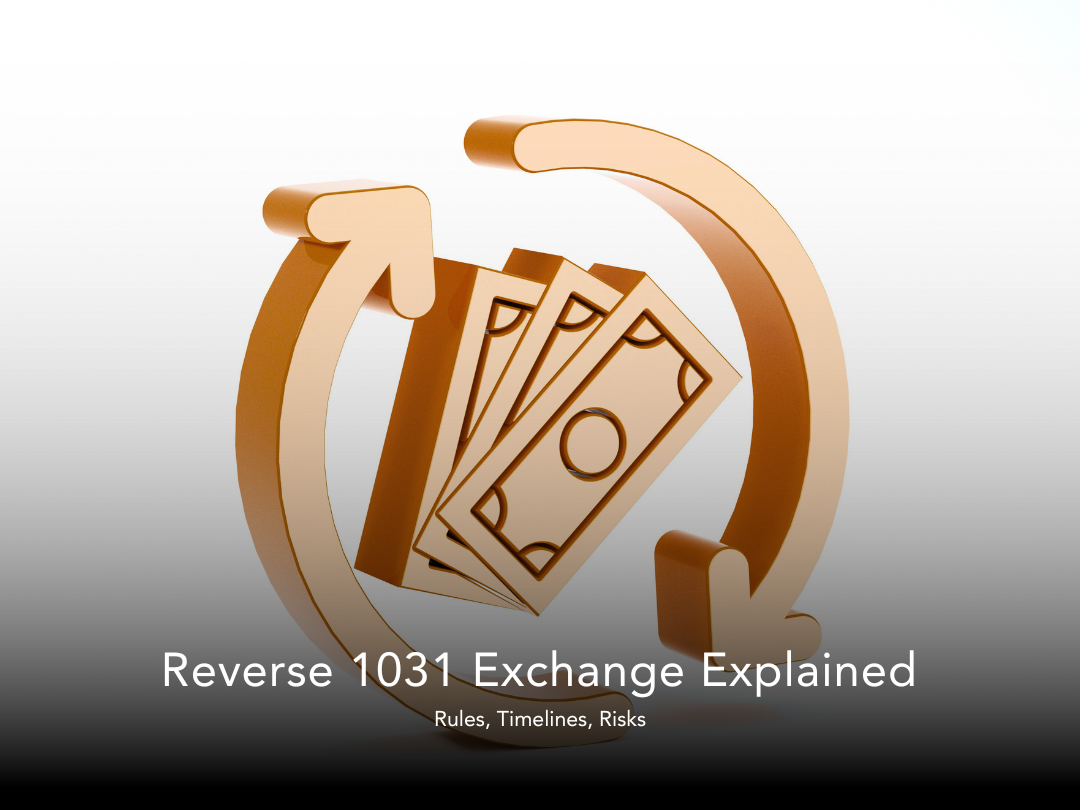A reverse 1031 exchange (often called a “reverse exchange” or a “parking” exchange) lets a taxpayer acquire the replacement property before selling their current (relinquished) property and still attempt to defer capital gains under IRC §1031. Because the taxpayer can’t legally hold title to both properties simultaneously for purposes of a like-kind exchange, reverse exchanges use a special parking structure and are significantly more complex, expensive, and paperwork-intensive than a standard (deferred) 1031. The IRS has provided a "safe harbor" framework for these parking arrangements (Revenue Procedure 2000-37), and taxpayers must follow the strict timing and structural rules to preserve nonrecognition.
Why use a reverse exchange?
You’ve found an attractive replacement property and want to buy it immediately (competitive market, limited inventory).
You don’t want to tie the replacement purchase to the uncertain closing of the relinquished property (financing fallouts, tenant leases, buyer contingencies).
You need time to market and sell the relinquished property while locking the new asset.
All of the above can justify the extra cost and administrative burden of a reverse exchange, but it’s not for routine transactions.
The two common structures (who “parks” what)
Under the safe-harbor framework and common market practice there are two principal reverse structures:
Park the replacement property (most common)
An Exchange Accommodation Titleholder (EAT) — usually an LLC set up by a qualified intermediary (QI) or a specialist reverse-exchange company — acquires title to the replacement property (the property you want).
The exchanger (you) later transfers your relinquished property to the EAT (or the EAT transfers the replacement to you as part of the exchange), completing the exchange.
This is typically called parking the replacement property. The EAT is treated under the safe harbor as the beneficial owner for limited 1031 purposes while it holds title.
Park the relinquished property (less common)
The exchanger transfers their relinquished property to the EAT first (the EAT “parks” the property).
The exchanger acquires the replacement property directly and the EAT later conveys the relinquished property to the ultimate buyer or to the exchanger as part of the exchange.
This is used when improvements will be made to the relinquished property or for certain liquidity/structural reasons. The economics and timing differ; practitioners choose the structure that best fits financing, title, and market constraints.
Key players and agreements
Exchanger — the taxpayer seeking tax-deferred exchange treatment.
Qualified Intermediary (QI) — the independent party that facilitates ordinary deferred exchanges (holds sale proceeds). In reverse exchanges QIs often operate through a subsidiary or an affiliated EAT, or they partner with a specialized EAT.
Exchange Accommodation Titleholder (EAT) — an entity (often a specially formed LLC) that acquires and holds title to one of the properties temporarily under a Qualified Exchange Accommodation Arrangement (QEAA). Under IRS Rev. Proc. 2000-37 the EAT can be treated as the beneficial owner for purposes of qualifying the transaction as a 1031 exchange if the safe-harbor conditions are followed.
QEAA / Reverse Exchange Agreement — the written contract between taxpayer and EAT describing the parking arrangement, cost allocations, who pays what, and the timeline. Most providers require the QEAA to be in place very shortly (typically within five business days) after the EAT acquires title to the property (check your provider’s contract).
Critical timing rules — the 45/180 clocks (how they apply in reverse exchanges)
Section 1031 nonrecognition for non-simultaneous exchanges is governed by strict identification/receipt rules: identify within 45 days and complete within 180 days. For reverse exchanges the starting point differs from a standard deferred exchange:
When the clock starts in a reverse exchange: the 45-day and 180-day periods are triggered by the transfer that begins the QEAA — usually the EAT’s acquisition of the parked property (the replacement property if using the common “park replacement” structure). After that acquisition, the exchanger generally has 45 days to identify the relinquished property (or satisfy the identification requirements under the rules) and 180 days to transfer the relinquished property so the exchange can be completed. These deadlines are absolute (no extensions).
Practical point: Because the replacement property was already purchased, the exchanger must market and sell the relinquished property quickly, or the EAT may have to deed the replacement to the taxpayer (which may have adverse tax consequences if the transaction cannot be completed as a qualified exchange).
Identification rules (45-day specifics & 200% rule)
The same identification rules that apply to deferred exchanges apply to reverse exchanges, but the identification window runs from the EAT’s acquisition event:
45-day identification rule — the exchanger must identify the relinquished property to the EAT/QI in a manner consistent with §1.1031(k)-1: the commonly used methods are (a) identify up to 3 properties regardless of value (3-property rule), (b) identify any number of properties so long as the total value does not exceed 200% of the value of the parked property (200% rule), or (c) the “95% rule” (must acquire 95% of identified properties by close). The practical application for reverse exchanges can be tricky because the parked property’s value is the baseline for the 200% test.
Financing, debt, and “boot” considerations
Debt replacement or mortgage boot: If the replacement property (parked by the EAT) is purchased with a different amount of mortgage debt than the relinquished property had, the difference in liabilities can be treated as boot and cause taxable gain recognition unless properly structured. You must match or otherwise address debt relief/assumption (e.g., bring cash to replace debt or negotiate assumption).
Lender issues: Most lenders will not loan to an EAT LLC the way they would to an individual purchaser. Often the exchanger secures financing personally (or through a related entity) and then arranges short-term financing or uses cash in the reverse exchange vehicle. Financing must be carefully coordinated with counsel, the QI/EAT, and the lender. Many practitioners recommend lining up financing contingencies and lender approval in advance.
Improvement (build-to-suit) reverse exchanges
Revenue Procedure 2000-37 contemplates improvement exchanges where the EAT can hold the replacement property while improvements are made before it is transferred to the exchanger (a “reverse improvement exchange” or “build-to-suit”). Those are even more complex: the EAT must hold title while improvements occur, construction contracts and payment flows must be carefully documented, and the 45/180 clocks still apply. If you plan improvements, use a provider experienced with improvement reverse exchanges and get legal/tax advice.
Related-party rules and other traps
Related-party exchange restrictions (IRC §1031(f)): Exchanges involving related parties have extra rules — generally, if you exchange with a related party, the parties who received property must hold it for at least two years, or the nonrecognition may be disallowed and taxes retroactively due. The related-party rules are complex, and reverse exchanges that involve related parties are dissected closely by the IRS. Always get counsel if a related party is involved.
Other common pitfalls
Failure to comply with the 45/180 deadlines (no extensions).
Improper documentation or use of an unqualified EAT/QI.
Constructive receipt problems (exchanger must not be in actual/control receipt of sale proceeds or parked property in a way that undermines the arrangement).
Misallocation of purchase/sale costs between parties leading to tax exposure.
Inadequate coordination with title & lender.
Reporting: Form 8824 and tax return issues
A completed 1031 exchange — including reverse exchanges — is reported on IRS Form 8824 (Like-Kind Exchanges) for the taxable year in which the exchange is completed. The exchanger must properly report deferred gain, basis adjustments, and any recognized gain (boot). Form 8824 instructions and the IRS guidance describe how to report complex exchanges; many reverse exchanges also require supplemental documentation and explanations.
Costs, time, and practical considerations
Costs: Reverse exchanges often run several thousand to tens of thousands of dollars in transaction fees (EAT setup, title transfers, holding costs, legal fees). Expect higher fees than a deferred exchange.
Timing risk: The 180-day deadline forces a seller to market and sell the relinquished property relatively quickly. If the property doesn’t sell within 180 days, the EAT may have to deed the parked property to the exchanger (which can negate tax deferral).
Due diligence: Work with a reputable reverse-exchange provider and tax counsel; get lender sign-off before you close the replacement property; confirm all documents and timelines in writing.
Step-by-step practical checklist for a typical “park the replacement” reverse 1031
Preliminary planning — consult tax counsel and a reputable reverse-exchange provider/QI. Confirm whether a reverse exchange is appropriate.
Engage a provider & form the EAT — sign a QEAA and related agreements before or immediately after EAT acquisition of the replacement property (many providers require QEAA quickly).
EAT purchases replacement property — EAT takes title. The 45/180 clocks start (confirm exact trigger with counsel/provider).
Identify relinquished property in writing to EAT/QI within 45 days (use 3-property or 200% rules appropriately).
Market and sell relinquished property — coordinate closing so transfer occurs within 180 days.
Complete the exchange — EAT conveys replacement property to the exchanger and receives the relinquished property (or EAT transfers/assigns to the buyer per the transaction structure). Ensure liabilities are matched and boot is accounted for.
File Form 8824 with your tax return for the year the exchange is completed and retain all QEAA documents, escrow/title papers, and closing statements.
When a reverse exchange makes sense (and when it doesn’t)
Makes sense when:
Replacement property is scarce and you need to buy immediately.
You can afford the extra costs and complexity.
You have competent counsel, a quality EAT/QI, and lender cooperation.
Probably doesn’t make sense when:
You haven’t lined up financing or clear title.
The relinquished property is likely to take a long time to sell.
The incremental tax savings don’t offset the fees/risks.
Further reading and authoritative sources
For detailed primary guidance consult:
Revenue Procedure 2000-37 (safe harbor for Qualified Exchange Accommodation Arrangements).
IRS guidance on like-kind exchanges and Form 8824 instructions (how to report exchanges).
Reputable exchange providers with reverse-exchange practice notes (examples: IPX1031, API Exchange, Exeter) for practical market workflows.
A reverse 1031 exchange is powerful but legally and administratively exacting. Small missteps (timing, title, debt differences, documentation, related-party mis-structures) can cause the IRS to deny nonrecognition and trigger immediate tax. Always involve a tax attorney or CPA experienced with reverse exchanges plus a qualified reverse-exchange provider before executing one.






